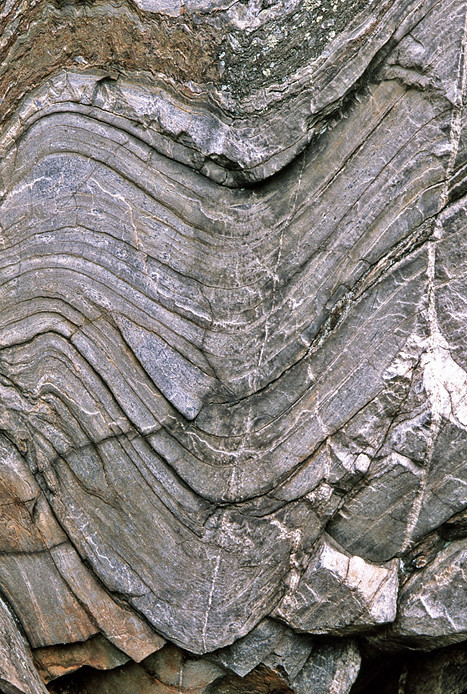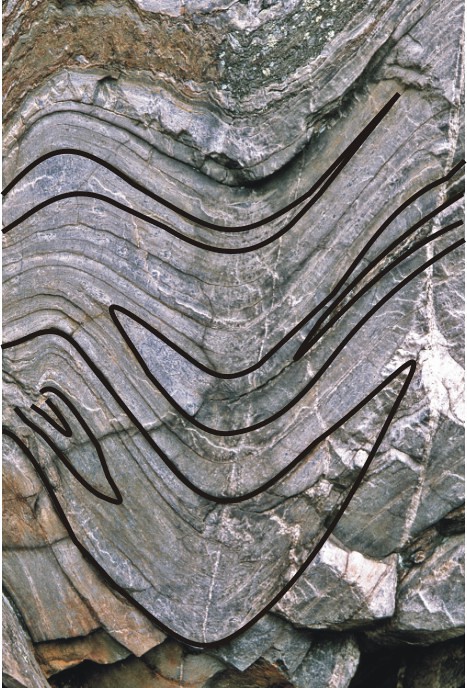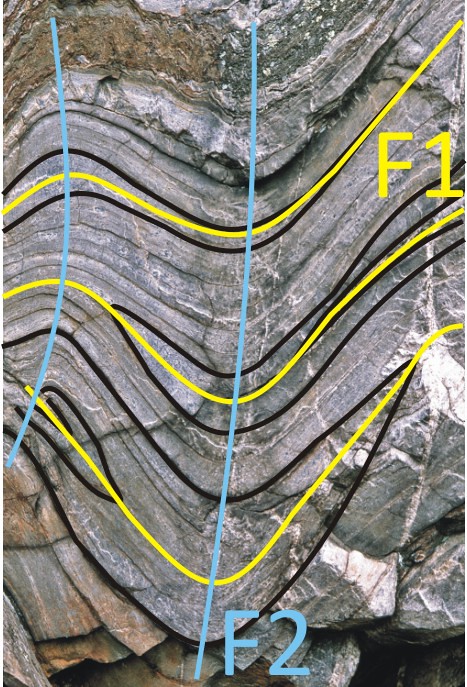Today’s Friday fold comes to us courtesy of Gary Fleming, botanist extraordinaire and brother of Tony Fleming, geological Jack of All Trades. Together, the Fleming brothers led a field trip for the Geological Society of Washington. While I was on that field trip, the topic of polyphase deformation came up, which led a couple of weeks later to Gary sending me this photograph. He took this photo in the Black Pond area, on the Virginia side of the Potomac River near the property of Madeira School:
That’s a set of twice-folded folds. The earlier generation of folds are quite tight enough that their limbs are parallel; we call this “isoclinal.” They display axial planes that run left-to-right across the photo. They are overprinted by a second generation of folds which are more open and broad. The second generation folds have axial planes which run top-to-bottom across the photo. Here’s an annotated copy showing the undulating form of the folds:
And here I’ve tacked on some color-coded axial plane traces: the first generation of folding (F1) is in yellow; the second generation (F2) is in blue:
The rocks in question are turbidites of the Mather Gorge Formation, folded up during the late-Ordovician episode of mountain building called the Taconian Orogeny. Relative to the orientation of this photograph, the F1 folds would have resulted from top-to-bottom compression, while the F2 folds would have resulted from a later episode of side-to-side compression.
It’s also worth noting the collection of small parasitic F2 folds in the schisty section at the top of the photo (greenish-gray, and partially obscured by mud).
Happy Friday! If your week has left you as contorted as these rocks, I hope you have a relaxing weekend…
Thanks to Gary Fleming for sharing this image and letting me publish it here.




nice explanation. I am Rushikesh Pimpalkar. I am working in India as an exploration geologist. My weak subject is structural geology; will you please help me to get understand the structural geology?